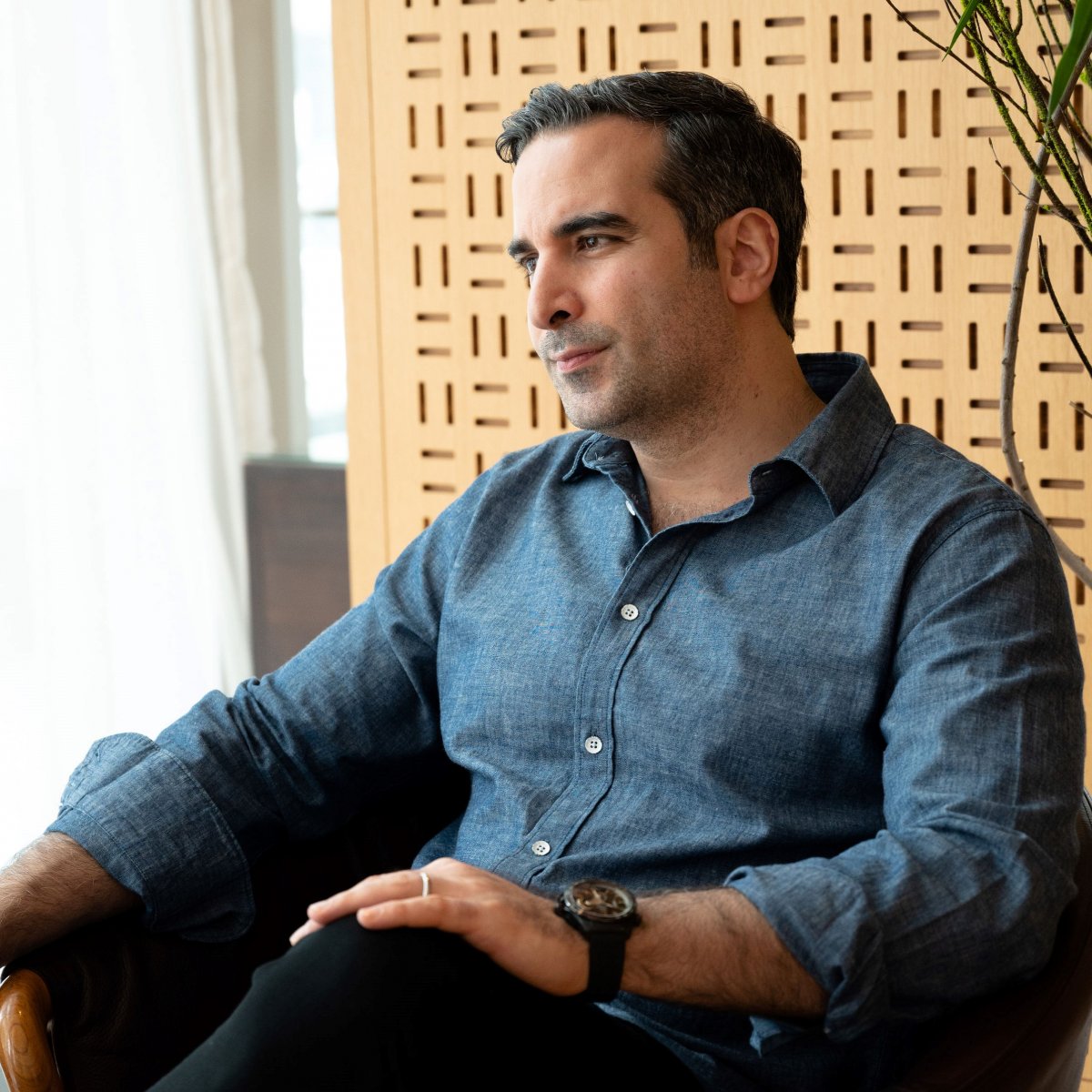[vc_row][vc_column][vc_column_text]They say the first $100 million is the hardest.
Gross Merchandise Sales (“GMS”) is arguably one of the most prevalent metrics tracked in e-commerce today. GMS measures the total sales volume that a given e-commerce business processes, and is a metric that EMERGE Commerce (“EMERGE”) and other e-commerce companies monitor and report on. One of the reasons it is such a widely used metric is because e-commerce companies often have different revenue recognition policies, so GMS allows for an “apples-to-apples” comparison of total sales volume, which serves as a proxy for sheer size and ultimately, market share.
In mid-November 2021, following our acquisition of WholeSalePet, a profitable B2B e-commerce marketplace, EMERGE eclipsed $100 million in pro forma GMS. This means our network of e-commerce brands collectively process in excess of $100 million annually worth of products, experiences, and services, making EMERGE one of a few pure-play Canadian e-commerce companies to eclipse the $100 million GMS mark, a goal that nearly every e-commerce startup includes as a key milestone in their journey.
They say the first $100 million is the hardest. We have reason to believe so, getting here was by no means easy, but what we have found so far is that scale breeds more scale. To illustrate, it took EMERGE about 4 years to arrive at approximately $30 million GMS at the time of our go-public listing in December 2020, and since then, it has only taken us less than a year to surpass $120 million on a pro forma basis, more than four times the GMS at the time of EMERGE’s go-public listing. With that being said, GMS is the starting point, not the end goal. Importantly, our revenue on a pro forma basis has grown by around six times compared to when EMERGE went public in December 2020, and our Adjusted EBITDA on a pro forma basis has grown by almost nine times in 2021 when considering our latest acquisitions.
Accelerating Acquisitions
EMERGE’s operations commenced in mid-2016. To date, we have completed seven acquisitions in North America, operating eight brands across five verticals. We went public in large part to accelerate the pace and the size of our acquisitions. In 2021, our first year as a public company, we announced three acquisitions of four brands, compared to one transaction in the prior year. Our acquisitions have generally skewed larger and more profitable with time, mainly because we have gained credibility with our investors, lenders, and ultimately with high calibre prospective sellers, who now have the benefit of seeing that we have successfully acquired and partnered with quality e-commerce businesses, management teams, and brands. We believe that continuing to build our track record will grant us access to high-quality acquisition opportunities as we progress.
With the investments we have made in our team and infrastructure, we expect 2022 to be another busy year on the acquisitions front. We have a robust pipeline and are actively advancing multiple opportunities.
RELATED: Ghassan Halazon, CEO of EMERGE Commerce Inc., on Sustaining a Start-Up Business
M&A Flywheel
From a technical standpoint, our repeatable M&A-driven flywheel works as follows. First, we acquire proven, profitable e-commerce businesses that deliver positive EBITDA (Earnings Before Interest, Taxes, Depreciation, and Amortization), typically with healthy cash flow conversion. Second, the additional acquired cash flow affords us the ability to increase our debt capacity. Third, we tap into further debt available to us to acquire additional companies, thereby delivering more EBITDA and cash flow. Fourth, the cycle repeats itself again and so forth.
Importantly, our model is such that we aim to acquire e-commerce businesses for four to six times EBITDA, typically with around three times in upfront cash. As long as we are able to continue to do that, we expect to be in a position to finance the majority, if not all, of the upfront purchase price of acquisitions with debt, thus minimizing dilution to shareholders over time.
There are currently thousands of profitable e-commerce opportunities out there. A decade ago, this was not the case at all. In fact, you would be challenged to find any profitable e-commerce businesses in the early days. Enter Shopify and other e-commerce enablement technologies. With superior and more affordable technology, these software companies have powered a movement of small to mid-size e-commerce companies, or as Shopify commonly refers to it, “Arming the Rebels” to compete with larger giants, such as Amazon. These bootstrapped e-commerce rebels run lean and mean, outsourcing technology to Shopify and the likes, while focusing on winning their respective niche by applying their unique domain expertise to merchandising, sales, marketing, and supply chain, enabling them to command market leadership positions in small but growing niches that the Amazons of the world are not paying as much attention to.
The resulting ocean of niche players has created an unprecedented opportunity to consolidate these largely bootstrapped e-commerce businesses under a unified portfolio. In a nutshell, that is the essence of what EMERGE does. We acquire high-performing e-commerce rebels, bootstrapped e-commerce companies with a multi-year track record of organic growth and profitability, and typically a market leadership position, or a real shot at it, in their respective niche. I always say what took a business from $0 to $10 million in revenue is not likely what will take that same business from $10 million to $100 million. That is where EMERGE steps in and partners with proven management teams to supplement their skillsets and resources with ours. We aim to see a $100 million opportunity over the next 3-4 years for every vertical we enter into, inclusive of tuck-in acquisitions.
Extracting Synergies – A Key Priority in 2022
A natural question is where does the value-add come from once EMERGE acquires these e-commerce rebels. The answer is far from “sexy,” and lies in centralizing a whole host of vendor software solutions, administrative and analytics functions, as well as cross-selling and data partnerships. For example, we currently own and operate eight brands, and over time, I see a day where we operate 100 brands. It would not make sense for each of these brands to have separate payment processors, email providers, fraud prevention systems, and customer service licenses. Packaging our portfolio companies together enables EMERGE to unlock savings and streamline processes for our businesses, with the added benefit of saving them additional time to focus on their domain expertise, while leaving the “pipes” to be handled by EMERGE.
So far, EMERGE has largely spent the early years acquiring anchor businesses and capable management teams across our five verticals (pets, golf, premium meat, outdoor gear, and local experiences). As such, the amount of synergy is limited to corporate savings and occasional cross-selling. Now that a number of core verticals have been cemented, in this next phase, we plan to pursue tuck-in acquisitions to bolster existing verticals, in addition to continuing to launch new verticals. Tuck-in acquisitions, in particular, are especially conducive to a deeper level of synergy between the brands.
Having announced four acquisitions in 2021, extracting synergies is a big operational theme for 2022 in particular, and we are keen to drive savings and upside across the portfolio.
Operating with Discipline
One metric we pay attention to at EMERGE is “GMS per Employee.” As of now, on a trailing twelve months pro forma basis, we drive north of $1 million GMS per Employee. Dare I share, this is almost three times the GMS per Employee at Amazon. Perhaps not quite an apples-to-apples comparison, as Amazon’s business has evolved into various non-e-commerce verticals as well, but you can count on me to let you know anytime we fare better than Amazon, at anything.
Another “efficiency” metric that demonstrates EMERGE’s disciplined approach to capital allocation and operations is “GMS to Equity Capital Raised,” which is approximately three times at EMERGE compared to the one-to-one we have generally seen in many early-mid stage e-commerce companies, meaning we have managed to translate every $1 of equity raised into approximately $3 of GMS.
Investors are encouraged to compare these two ratios for EMERGE with other e-commerce companies, large and small, to not only get a sense of scale but equally importantly, how efficiently a company is able to arrive at said scale.
The Rise of E-Commerce Consolidators
Perhaps one of the hottest themes in all of e-commerce today is the rise of “Amazon aggregators,” whereby holding companies acquire and consolidate a portfolio of largely Amazon “FBA” stores under one roof, leveraging shared technology, supply-chain, and data. There are inherent similarities between this approach and the model that EMERGE pioneered over the last five years.
The main difference, however, is that EMERGE mainly focuses on acquiring e-commerce brands that own their core assets, including a differentiated brand with established, direct relationships with their customers, and are not reliant on Amazon for traffic and product rankings. Each model has its merits, however, it is our view that relying solely on the Amazon ecosystem poses certain risks over time. Not to say we would never explore acquiring Amazon-based businesses as part of our diversified e-commerce strategy, however, we do not see reliance on Amazon as an advisable approach for EMERGE.
For now, it seems these risks are not dissuading investors, as Amazon aggregators have reportedly raised nearly $12 billion in capital across almost 100 players. Thrasio, a private U.S. based company, is considered the leader in the Amazon roll-up wars, having recently raised $1 billion at a rumoured valuation in excess of $5 billion, or approximately five times GMS, a considerably higher multiple than even global e-commerce powerhouses like Amazon and Alibaba command.
Valuation Discrepancy
While Thrasio’s valuation reflects its position as the global “poster child of e-commerce aggregation” theme, there are a number of other e-commerce and consolidation peers that trade at substantially higher premiums to EMERGE’s valuation today. We took a look at three “comparable” categories: e-commerce & marketplace giants such as Amazon and Shopify, direct to consumer e-commerce companies such as Warby Parker and HelloFresh, and Canadian consolidators, mostly SaaS businesses, such as Constellation Software.
While we have yet to formally report our Q4 results, we believe they will provide a partial glimpse of the scale and profitability of the pro forma platform, given we completed two acquisitions during the fourth quarter of 2021. We believe that eclipsing $100 million in GMS was the first step in arriving at the “entry point” for compelling scale. We also anticipate 2022 will be our first year of Positive Operating Cash Flow, so we are excited to deliver on that key milestone. Another goal of ours this year is to arrive at $100M in revenue on a pro forma basis and $10M in Adjusted EBITDA, on a pro forma basis post-acquisitions.
Attracting World-Class Investors
In our ongoing quest to surround EMERGE with world-class investors and partners, we announced last week that Harish Consul, Founder and CEO of Ocgrow Ventures, has joined EMERGE as a Strategic Advisor. Ocgrow is a prolific technology and e-commerce investor, including early investments in Amazon, Shopify, and Coupang (the “Amazon of South Korea”). Ocgrow is also a co-investor with Bill Gates, Khosla Ventures, and various other premier Silicon Valley investors. We believe the addition of Harish and Ocgrow Ventures ushers in a new era of long-term strategic partners that have great alignment with EMERGE’s long-term ambitions of scaling one of the preeminent e-commerce portfolios globally.
$1 Million Day Achieved. Daily Goal, One Day.
Perhaps a testament to the culmination of the team’s hard work in 2021, we registered our first $1 million GMS day on Cyber Monday (November 28, 2021), typically the largest day of the year for most e-commerce companies. I told the team that in the not too distant future, I see a day where we are capable of selling $1 million worth of goods and services on a daily basis. We also achieved three times growth year-over-year during the Black Friday-Cyber Monday period, considered the “Super Bowl” of the e-commerce world. Ultimately, November was our first $10 million GMS month, exceeding our entire GMS during the third quarter of 2021.
Eclipsing $100 million GMS is quite the milestone, especially in the context of the Canadian e-commerce landscape, but it really is only 10% of the way to $1 billion, and that is an even smaller drop in the bucket, 0.023% to be precise, of the $4.3 trillion global e-commerce market. By the time we look up again in two years or so, the e-commerce market is forecasted to be $6.3 billion by 2024.
One thing I can say with a high degree of confidence is that there will be dozens, if not hundreds, of multi-billion dollar e-commerce companies created globally over the next decade. We truly believe we can be one of them.
We absolutely still have work to do, but let me just say, I could not be more proud of the work we are doing together.
They say the first $100 million is the hardest. We are on a mission to prove them right.
This article was an excerpt from Ghassan Halazon’s annual letter to EMERGE Commerce (TSXV: ECOM) shareholders. You can view the original letter in its entirety along with all sources and additional information here.[/vc_column_text][/vc_column][/vc_row]













